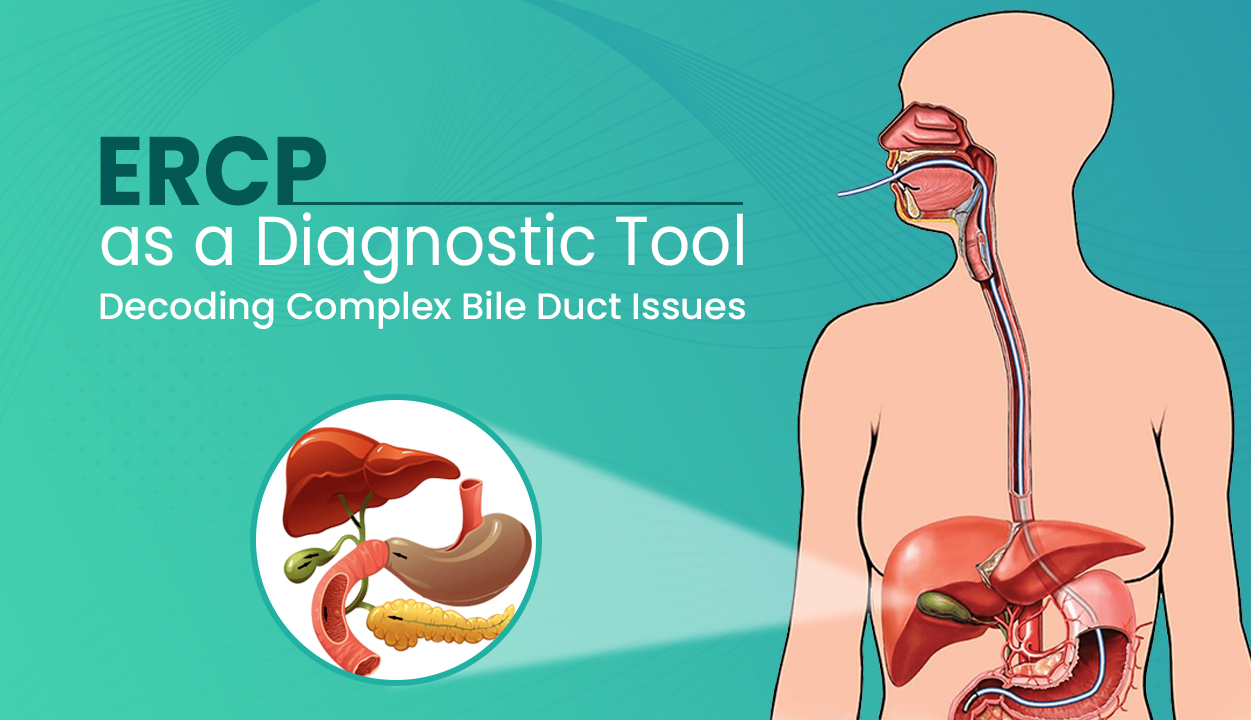
ERCP as a Diagnostic Tool: Decoding Complex Bile Duct Issues
Unlocking the secrets hidden within our bodies is a crucial endeavour when it comes to preserving our health. In this quest, medical marvels like ERCP, or Endoscopic Retrograde Cholangiopancreatography, emerge as indispensable tools. ERCP is not just a diagnostic procedure; it’s the super detective that delves into the intricate labyrinth of your liver, gallbladder, bile ducts, and pancreas. Equipped with a flexible tube armed with a tiny camera, ERCP navigates the complex network of tunnels within your digestive system to uncover the root causes of mysterious bile duct issues.
The Need for ERCP as a Diagnostic Tool:
ERCP serves a vital role in diagnosing and addressing complex digestive system issues. This diagnostic tool enables doctors to identify a range of conditions, including gallstones, blockages, tumors, and irregularities in the pancreas, bile ducts, gallbladder, and liver. It is essential for early identification and treatment of tumors or growths in organs like the pancreas, gallbladder, and liver.
ERCP effectively maps structural irregularities in bile ducts, offering guidance for treatment decisions. It provides precise guidance for obtaining tissue samples, aiding in diagnosing conditions.
Moreover, it can safely remove gallstones when they become lodged in the bile ducts and facilitate the placement and removal of stents to clear and maintain open ducts. In cases where it’s necessary, ERCP also allows for the creation of small duct openings to improve fluid flow and remove small gallstones. As a versatile gastrointestinal endoscopy procedure, it plays a pivotal role in treatment, enhancing patient care in the realm of digestive health.
How ERCP Works:
Imagine ERCP, our modern diagnostic tool, as a camera-tipped tube on a mission. Here’s how it’s done:
The procedure involves preparation, anesthesia for comfort, and the gentle insertion of the ERCP tube through one’s mouth, down the throat, into the stomach, and finally into the bile and pancreatic ducts. A special dye and X-rays enhance visibility for precise diagnosis, followed by potential treatments such as gallstone removal, stent placement, or tissue sample collection based on findings.
While ERCP is a remarkable diagnostic tool, it’s not for everyone. You may not be eligible if:
- You’ve had certain gastrointestinal surgeries for bile duct obstruction.
- You have unique anatomical challenges in your esophagus.
However, eligibility ultimately depends on your specific health condition, so it’s essential to consult with your healthcare provider.
After ERCP, you’ll be monitored as the anaesthesia wears off. Common discomforts include bloating and a mild sore throat. Most people can start drinking clear liquids shortly after the procedure. If biopsies are taken, results will be sent to a lab for analysis.
Recovery and Risks:
As with any medical procedure, there are some risks, but they’re usually rare. These include pancreatitis (inflammation of the pancreas), bleeding, infection, and a tiny chance of a tear in the intestine lining. If you experience severe abdominal pain, fever, or other unusual symptoms afterward, it’s important to contact your expert doctor.
With proper preparation and a skilled healthcare doctor, ERCP can provide valuable insights into your health and help you on your journey to wellness. So, if you have a bile duct issue or need an ERCP, consult our expert doctors at Yashoda Super Speciality Hospital, Kaushambi. Click the link below to book an appointment and receive expert guidance: http://182.79.136.75:62/
